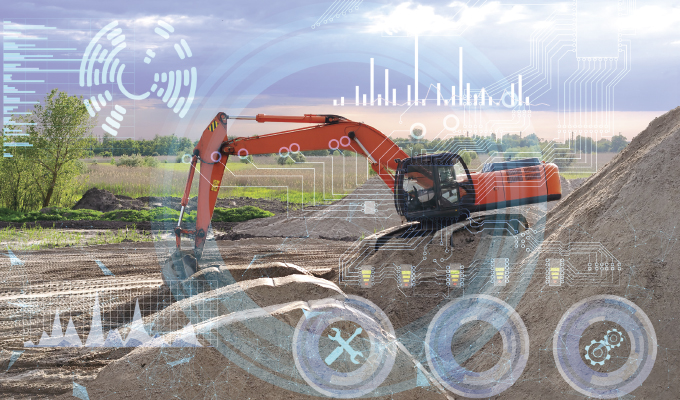It’s hard to ignore the impact artificial intelligence (AI) has on many industries. Virtually every sector is starting to experiment with the technology, and the once-tech-adverse construction industry is no exception. The use of AI in construction safety is particularly promising.
Risk is part of the job in construction. Any process with so much manual labor and heavy equipment will naturally entail some hazards, but that doesn’t mean firms must settle for their current safety figures. Some believe AI could unlock a new era in construction site safety.
Despite this technology’s newness, firms have already found multiple uses for it under the umbrella of construction safety.
SAFER PROJECT PLANNING
Hazard prevention begins before a project enters the construction phase, as do AI applications. Machine learning models can analyze past incidents to learn what conditions make certain hazards more or less likely. They can then perform in-depth, reliable risk assessments for each project.
Early examples of this technology have seen 25 percent reductions in recordable incidents among some companies, reports Business Insider. That’s because AI’s more accurate assessments lead to relevant safety planning and employee training.
REAL-TIME MONITORING
The benefits of AI in construction safety extend into the actual building phase of the project. Internet of Things (IoT) devices and connected cameras can gather real-time data on a work site that AI monitors to alert you of emerging hazards.
For example, federal law requires fall protection for any ladder above 24 feet, but that exact benchmark can be hard to spot in the moment. AI can analyze video feeds from on-site cameras to detect when ladders approach that height without fall protection and alert workers to the issue. Alternatively, the systems could monitor data from smart vests or connected helmets to notify employees when they’re nearing exhaustion, suggesting they take a break.
PREDICTIVE MAINTENANCE
Predictive maintenance (PdM) is a more familiar AI application for many construction firms. This strategy is another example of AI monitoring IoT data but applies to equipment’s operating conditions. AI alerts maintenance personnel when real-time factors suggest a machine will need repair soon.
PdM can catch potential errors before they’re outwardly noticeable, as AI is better at spotting trends in data than humans. Consequently, it’s better at preventing equipment breakdowns that may endanger operators or nearby workers.
ONGOING IMPROVEMENTS
You can also use AI in construction safety to enable long-term improvements. The same kinds of models that perform site-risk assessments can detect larger trends by analyzing incident data across multiple projects. This analysis can reveal common mistakes or hazards to address to make future projects safer.
This kind of analysis is challenging to do manually, as trends and their causes can be easy to miss in large data pools. However, that’s exactly what AI is best at, so this use case can yield significant improvements.
CHALLENGES OF AI IN CONSTRUCTION
AI may seem like the answer to all construction safety woes if you only look at these benefits. However, this technology has several downsides that limit its practicality—at least for now. It’s important to understand these challenges before investing in AI.
One of the biggest limitations of AI in any context is its need for huge amounts of information. Machine learning models require thousands or even millions of data points to produce reliable results. Gathering all that information and ensuring it’s accurate and clean is a time-consuming, expensive process.
Generative AI in construction may provide a solution, as it can generate synthetic data to train other models. Alternatively, you could look for off-the-shelf, pretrained AI systems, which are becoming more common. However, remember that AI still needs large datasets to be as accurate as possible.
As reliable as AI often is, it’s far from perfect. AI can only identify and respond to trends in data. It can’t technically judge truth from fiction. Consequently, using generative AI in construction can lead to hallucinations—instances where AI spouts outright falsehoods as fact—which can create serious safety issues if you act on them.
Similarly, detection models are prone to false positives. While it’s better to be safe than sorry regarding safety, too many alerts can lead to complacency and hinder on-site productivity.
CYBERSECURITY CONCERNS
AI can introduce new cybersecurity concerns. Because AI requires so much data, models may attract more attention from cybercriminals. Construction is already the most-targeted industry for ransomware, according to file-encryption software company NordLocker, so many firms can’t afford to become even bigger targets.
AI is also vulnerable to data poisoning attacks, where criminals insert misleading information into a training dataset, causing the model to become unreliable. These attacks could lead to significant missteps if you take AI analyses at face value, so protecting against them is crucial when using AI. Restricting access permissions and encrypting datasets can help, but many firms lack cybersecurity expertise.
GET READY FOR THE AGE OF AI
Despite these concerns, AI is increasing in construction safety. All these issues are addressable. Best practices will emerge as more key industry players find ways around them, enabling safer, more reliable AI rollouts.
AI’s benefits are too advantageous for the industry not to capitalize on. This shift is already taking place, so AI could redefine construction safety before long. It’s now a matter of when and not if.
About the Author:
Emily Newton is an industrial writer who specializes in covering how technology is disrupting industrial sectors. She’s also the editor-in-chief of Revolutionized where she covers innovations in industry, construction, and more.
Modern Contractor Solutions, March 2024
Did you enjoy this article?
Subscribe to the FREE Digital Edition of Modern Contractor Solutions magazine.



